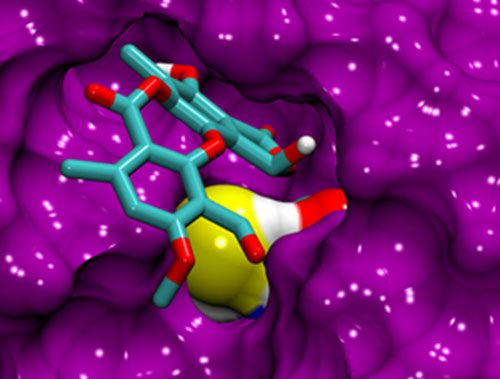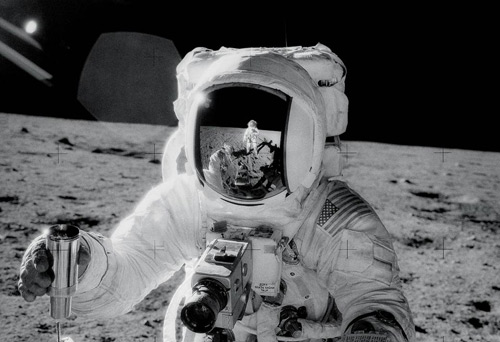Tag archives: data
Preserving Apollo’s data legacy
By Louise Mayor in San Francisco
Day two of AGU Fall 2015 saw the likes of SpaceX CEO Elon Musk and NSF director France Córdova talking in rooms packed full of earth and space scientists. But what grabbed my attention was a short talk by Nancy Todd of NASA’s Astromaterials Acquisition and Curation Office.
NASA being NASA, I assumed that all its data from completed missions would by now have been digitized and made accessible. That, I learned, is not true – but Todd and her colleagues are on the case.
View all posts by this author | View this author's profile
Big data offers biomedical insights

Suits you. This simulation of the p53 protein shows stictic acid fitted into the protein’s “reactivation pocket”. (Courtesy: Özlem Demir)
By Susan Curtis in Baltimore, US
At the 59th annual meeting of the Biophysical Society today, Rommie Amaro of the University of California, San Diego, highlighted the power of computational methods to speed up the discovery of new drugs to treat diseases as diverse as flu and cancer. Amaro focused on a recent project conducted while she was at the University of California, Irvine, to identify compounds that could play a vital role in future anti-cancer drugs by helping to reactive a molecule called p53 that is known to inhibit the formation of cancer cells.
View all posts by this author | View this author's profile
Spacecraft duets, suprise supernovae, the dark side of physics and more
By Tushna Commissariat
While you would not actually be able to hear the uplifting notes of the music in the vast emptiness of space, a newly composed string and piano orchestral piece has unexpected ties to the cosmos. That’s because it is based on 36 years’ worth of data from NASA’s Voyager 1 and 2 spacecraft. Domenico Vicinanza, a trained musician with a PhD in physics who works at GÉANT, a European data-network company, says that he “wanted to compose a musical piece celebrating Voyager 1 and 2 together, so I used the same measurements (proton counts from the cosmic-ray detector over the last 37 years) from both spacecrafts, at the exactly same point in time, but at several billions of kilometres of distance [of] one from the other”. The result of this “data sonification” is a rather beautiful piece of music – one of the best examples of physics and the arts coming together that we have heard. Of course, the story garnered considerable interest…you can read more about on the Wired and Guardian websites.
View all posts by this author | View this author's profile
